|
The MPCA held its eighth annual modeling practice and regulatory update open house on July 18, 2019. The open house introduced proposed changes to the MPCA Air Quality Modeling Practices Manual for 2020, as well as changes in federal modeling practices, ambient air-related policy changes, and updated modeling protocol submittal through the MPCA eServices. The MPCA also accepted feedback from internal and external stakeholders on the Modeling Manual, and this feedback is currently under review by MPCA modeling staff. The completed 2020 version of the MPCA Air Quality Modeling Practices Manual will be made available online in September of this year. Contact AirModeling.PCA@state.mn.us with any questions or if you wish to receive future announcements for air modeling meetings or Manual revisions.

On June 11, the MPCA and the Minnesota Department of Health released the report, “Life and breath: How air pollution affects health in Minnesota.” Following up on the two agencies’ 2015 report on air pollution’s effects on health in the Twin Cities metro area, the new report provides an in-depth look at the impacts of air quality on health throughout Minnesota.
The report estimates that about five to 10 percent of all Minnesota residents who died, and one to five percent of all residents who visited the hospital or emergency room for heart and lung problems, did so partly because of fine particles in the air or ground-level ozone. This translates to 2,000 to 4,000 early deaths, 500 additional hospital stays, and 800 emergency room visits every year.
Moreover, some groups are more vulnerable to air pollution than others, including elderly people, people living in poverty, people with pre-existing heart and lung conditions, children with asthma, and people without health insurance. Structural inequities, like income, racial discrimination, transportation patterns, community social status, education, and housing are major contributors to how health is affected by air pollution. It is because of these factors that air pollution isn’t just a big city issue. Some of the regions with the greatest burden from air pollution include senior populations in the metro, central, and southeast parts of Minnesota.
|

A media event on June 11 outside Rochester featured the commissioners of both agencies as well as the mayor of Rochester, a Mayo Clinic doctor specializing in pulmonary medicine, and local Olmsted County Public Health Services commissioners. All presenters are pictured here. Read the Star Tribune coverage of the event and the report here and Rochester Post-Bulletin coverage here. The full report is on MPCA’s Life and Breath website. Concurrent with the release of the report, the two agencies released a web portal, with interactive maps and data tools from the study.
|
Canadian wildfire season started a little earlier this year with fires raging from British Columbia to Ontario beginning in late April and expected to continue in various locations throughout the summer and fall months. And, yes, this means Minnesota again has to deal with periodic waves of smoke blowing in from these fires. The MPCA has already issued two air quality alerts this season, with more episodes expected.
Wildfires in British Columbia and Alberta began to burn in April; however, the wind patterns aloft did not allow for smoke transport to Minnesota until mid- to late-May. In May, a unique situation developed: low-level winds and atmospheric mixing kept smoke from concentrating, but lingering nitrogen oxides and volatile organic compounds found in the smoke reacted to very warm temperatures and mostly sunny skies over parts of the state. This reaction created high ground-level ozone values and dramatically increased the air quality index (AQI) numbers to approach and even exceed the 101 value for the Orange category (unhealthy for sensitive groups) in parts of northern and central Minnesota.
In June, the weather pattern improved with periods of showers and thunderstorms and shifting wind directions. Fires were dampened somewhat and jet-stream winds blew the smoke northward toward the Arctic region. Air quality conditions improved to Green (good) category and occasional spikes into the Yellow (moderate) category for the duration of June.
Early July saw a brief return of the wildfire smoke, this time originating directly north of Minnesota in western Ontario and eastern Manitoba. Due to the closer proximity of the fires, the smoke was thicker and more acrid, making for a more significant plume impacting the state with lowered visibilities (under two miles), a strong smell and even taste, and some of the highest measured AQI values since monitoring began in the 1990s. Heavy smoke poured southward into the Boundary Waters, extending to the Moorhead/Detroit Lakes region in the northwest part of the state and eastward to the Duluth/Fond du Lac area and most areas of the North Shore. The MPCA issued an air quality alert for the entire northern third of the state for a two-day duration. The monitors at the Red Lake and Leech Lake Tribal Nations saw hourly values exceed 250 on the AQI scale – the highest one-hour values ever measured in Minnesota. Winds gradually switched out of the north to a southerly flow and, along with atmospheric mixing, the smoke very slowly began to disperse and move out of the state.
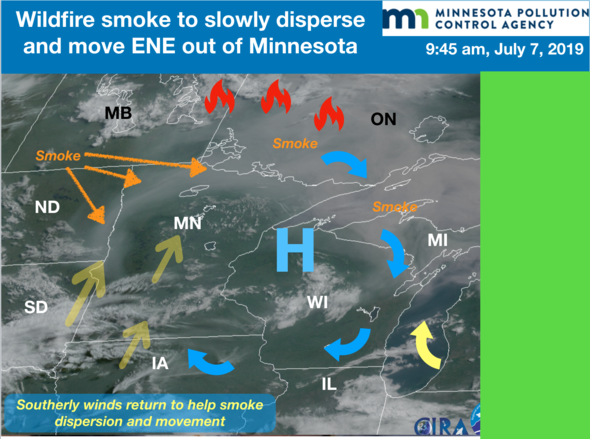 Based on National Weather Service summer outlooks of warm temperatures and the already dry conditions over the Pacific Northwest and western and central Canada, the potential for wildfires is high and will continue through August and September. To keep tabs on the daily air quality measures and forecasts, visit the MPCA AQI webpage. Download the Minnesota Air app, sign up for email notifications on the Air Now website, or follow @mpca_aqi on Twitter.
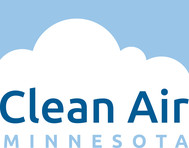
Clean Air Minnesota has had a great two year biennium with many exciting collaborative projects and major emissions reductions. Between July 1, 2017 and June 30, 2019 the work of Clean Air Minnesota partners reduced 250 tons of VOCs, 600 tons of NOx, and 240 tons of PM2.5 through about 40 projects. The reductions from the past two years eclipsed the total emissions reductions over the previous four years of Clean Air Minnesota projects combined due to some new, innovative projects, as well as consistent efforts to reduce diesel pollution from vehicles and equipment. The past two years included new projects and programs such as MPCA’s electric lawn equipment replacement grant (see below) and Environmental Initiative’s Project Stove Swap, which changes out old wood heating equipment for newer, more efficient and cleaner equipment.
Clean Air Minnesota is a public-private community partnership established over 16 years ago. Since then, the group has taken on many projects to help Minnesota voluntarily reduce emissions and make our air cleaner. Projects are organized around three focus areas: neighborhood sources of air pollution, including auto-body shops, drycleaners, and lawn equipment; mobile sources such as school buses, trucks and construction equipment; and wood smoke, focused on education and swapping out old wood-burning appliances for cleaner ones.
For more information about this partnership, visit Clean Air Minnesota’s webpage.
|
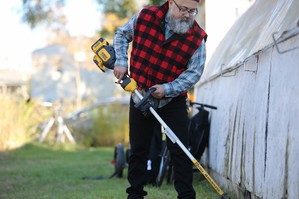
The City of St. Louis Park Parks and Recreation Department had a large, aging collection of two-cycle gas-powered landscaping equipment. When researching replacements, they decided to purchase all battery-powered equipment with the help of an MPCA grant for alternative landscaping equipment. The grounds staff took to the new equipment quickly. They like that the electric-powered equipment is easy to use, lightweight, quiet, and has no smell. St. Louis Park was so pleased with the battery-powered equipment that they budgeted to purchase more that same year. They now keep their gas-powered equipment locked up and only use it occasionally, when it’s essential to a task.
Securing grant funds to purchase electric-powered equipment proved to be a worthy investment for the department. In hindsight, Park Superintendent Rick Beane wishes they would have planned to use grant funds to roll the equipment out to the entire city, instead of just the Parks Department. His advice for others applying for this grant: dream big!
Gas-powered landscaping equipment — string trimmers, leaf blowers, hedge trimmers, chain saws, lawn mowers, etc. — is a significant source of volatile organic compounds and other air pollutants, particularly in urban areas. MPCA has provided more than $173,000 in grants to help organizations switching to battery-operated landscaping equipment. These purchases will reduce annual air emissions by approximately 185 tons of VOCs, 0.6 tons of nitrogen oxide, and 6.5 tons of fine particles.
Coming soon: another round of MPCA grants for alternative landscaping equipment to replace your summer or winter 2-cycle gas-powered equipment. Buy less gas, reduce maintenance costs, and improve employee and community health by eliminating air emissions. Small businesses and organizations are encouraged to sign up here to be notified when these grants open later this summer.
|

MPCA’s most recent report on residential wood combustion is now available online. This report is updated about every three years and has been done in some form since 1960. The report is used for Minnesota’s emissions inventory, as well as for outreach and policy development.
Key findings of the report include:
- 45 million cords of wood were burned from May 2017-April 2018 – enough to fill US Bank Stadium!
- 46% of Minnesota households burn wood.
- The greatest amount of wood was burned for heat, but the reason most people burn wood is for pleasure.
More information on the survey and how to more efficiently burn wood is on the MPCA’s wood smoke webpage.
|

This year sixteen Minnesota Technical Assistance Program (MnTAP) interns spent their summer helping companies save money and improve the environment. This group of highly qualified engineering students will present the results of their projects at the 2019 Intern Symposium on Wednesday, August 21, from 1:00 - 4:00 p.m. This event is open to the public.
MnTAP will also be hosting a reception before the symposium on Wednesday, August 21, 2019, at the McNamara Alumni Center on the University of Minnesota campus from 12:00-1:00 pm to celebrate their 35th anniversary. The organization welcomes partners, companies, and other guests to join them in celebrating past successes and looking ahead to the future. For more information please see the MnTAP Facebook page or to RSVP for either event, please see the Symposium registration page or contact MnTAP at 612-624-1300.
For 35 years, MnTAP has been providing answers to businesses’ questions about waste reduction, pollution prevention, and energy efficiency. In that time, Minnesota businesses who have worked with MnTAP’s scientists and engineers have saved over $53 million while reducing 400 million pounds of waste and saving 800 million gallons of water, 77 million kWh of electric energy, and 5.5 million therms of natural gas energy. MnTAP staff members have completed nearly 5,000 site visits to facilities and placed 300 interns at businesses across Minnesota. MnTAP operates one of the longest-running pollution prevention intern programs in the country and has created a legacy of quality technical assistance for Minnesota businesses that ranks among the best in the nation.
|

Later this summer, the MPCA will offer a total of $2.7 million in funding to help replace older diesel vehicles and equipment with cleaner alternatives. Two grant opportunities are coming:
-
$1.5M for heavy-duty electric vehicles: This grant is for replacing delivery trucks, semi-trucks, transit buses, school buses, and shuttle buses as well as drayage trucks, forklifts, and airport ground-support equipment. The vehicles and equipment must be replaced with all-electric alternatives.
-
$1.2M for cleaner diesel off-road vehicles and equipment: This grant is designed to reduce emissions from older diesel-powered off-road vehicles and equipment including construction, mining and warehouse equipment, marine vessels and port-loading equipment, locomotive engines, and drayage trucks.
These grants are funded by Minnesota’s portion of the national Volkswagen settlement and the Diesel Emissions Reduction Act. Replacing older diesel engines in heavy-duty vehicles achieves significant emissions reductions of fine particle pollution, nitrogen oxides, and greenhouse gases. Together, these grants will improve Minnesota’s air quality while helping to fund cleaner-fuel alternatives. Check out our website and sign up for emails to receive updates.
|
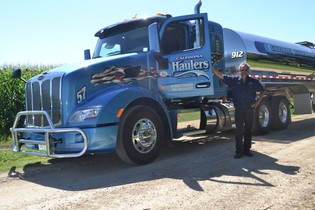
In June, MPCA staff traveled around Minnesota holding a series of meetings to share results of our VW settlement grant programs so far and to hear feedback on priorities, what people liked about the first phase of the program, and how we can improve. Public input had a direct impact on how we shaped the first phase of funding, and now we are asking for your help in creating the plan for Phase II. There are still ways to get involved!
- Fill out the survey: Tell the MPCA what your priorities are. Find the survey here and share it with others.
- Write a comment: MPCA is taking written comments through August 14, 2019. Send them to our email address, vwsettlement.pca@state.mn.us.
- Attend a technical meeting: MPCA is hosting one more technical meeting to do a deep dive on program design details.
Learn more about Phase II planning and how to get involved on our website.
Curious what we’ve done with the first phase of funding? Find our state plan on our website and explore the data from our first grants here.
|
This summer, a group of MPCA air quality staff launched the Air Assessment Seminar Series. The purpose of the seminars is to bring together MPCA staff and local scientific communities to communicate, learn, and collaborate. The seminars will be held every other month. On July 16 at St. Paul office, the first invited speaker, Dr. Kimberly Anderson from the University of Minnesota, gave a talk titled “Use of Low-cost Aerosol Sensors to Monitoring Personal Exposure to Ambient Air Pollution.” The next seminar with Dr. Jesse Berman will be on September 19 at 1:00 p.m. at the MPCA St. Paul office (520 Lafayette Rd. N.) in room 100. His talk will explain how to select/optimize air pollution sampling networks. If you are interested in attending the seminar or have suggestions for a future topic contact Min Zhong.


The Minnesota Technical Assistance program (MnTAP) is still seeking businesses who use trichloroethylene (TCE) to participate in the TCE Alternatives Project. Participating businesses will receive free technical assistance and testing to help them find a safer solvent or cleaning system that meets their process needs.
Recordings of the June 11, 2019 training event presented by MnTAP and the Toxics Use Reduction Institute are now available. The training includes information on the pros and cons of potential TCE alternatives as well as case studies for companies who have successfully eliminated TCE from their process.
For more information on the program or request an assessment, contact Jane Paulson (janep2@umn.edu, 612-624-1826).
|
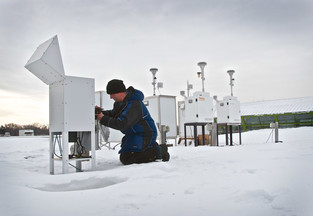
The final version of the 2020 Air Monitoring Network Plan for Minnesota was released on June 28th and is now available on the MPCA website. If you’re curious about how the MPCA monitors air quality across the state, this document is for you.
The MPCA operates air quality monitors statewide that measure for a wide variety of air pollutants. Some of these monitors allow us to compare Minnesota’s air quality to national standards in order to ensure that we continue to comply with those health-based requirements. Others allow us to better understand air pollutants that do not have federal standards, but nonetheless can affect the health of Minnesotans.
The purpose of this annual report is to demonstrate compliance with air monitoring network regulations, describe changes in 2020, and provide specific information on each of Minnesota's existing and proposed air quality monitoring sites. The plan also summarizes monitoring data for several pollutants to show current conditions relative to state and federal air quality standards. If you are interested in exploring monitoring data in more detail, visit the interactive data tool on the MPCA’s website.
Comments from the public regarding this plan and the Minnesota Air Monitoring Network are welcomed throughout the year. For more information, please contact Luke Charpentier, MPCA Air Monitoring Unit Supervisor, at 651-757-2268.
|

As Minnesota’s climate changes, governments across the state need to take action to achieve a resilient, economically thriving, and healthy Minnesota that is prepared for both short- and long-term climate changes and weather extremes. To track progress in this work, MPCA funded and helped develop a statewide survey of Minnesota cities, counties, watershed districts, soil and water conservation districts, tribal governments, and state agencies. The first survey was completed in 2016 and the effort was replicated in 2019 to measure progress.
Highlights include:
- Governments all across the state are planning for climate change. There has been a big increase in climate adaptation planning since 2016: now almost a quarter (24.5%) of all governmental organizations in Minnesota have at least one plan (e.g. water, health and safety, or comprehensive plans) with content related to climate adaptation as of 2019, up from 17.5% in 2016.
- About half of small cities in Greater Minnesota are reporting experiencing extreme rainfall events – by far the most frequent climate change-related event or trend identified.
- For the first time, more respondents (55%) have included climate adaptation as part of their water planning than have not.
- 65% of responding organizations have taken at least one adaptation-related action in the past three years, including planting more community trees and/or resilient tree species and increasing the community’s walkability, bikeability, public gathering spaces, or pedestrian safety.
- Respondents indicated they need help planning for climate change. 54% of respondents said that financial assistance would be helpful and 38% identified local climate change projection data as a resource that would help.
The 2019 and 2016 Climate Adaptation Planning Survey reports can be accessed on the newly updated MPCA Adapting to a Changing Climate webpages. Scroll down to the Assisting Communities section for the links.
|
You may recall that MPCA and Department of Health investigated community exposures to unacceptable emissions of trichloroethylene (TCE) from the Water Gremlin Company in White Bear Lake last winter. The investigation culminated in a settlement agreement on March 1 that included a large penalty and provisions for the company to restart coating operations using a different solvent called Fluo Solv. Since then the company has focused on optimizing new equipment to control VOC emissions.
Under the agreement the company had until May 31 to get the pollution control system up and running, but delays led them to request extensions. MPCA granted a couple of extensions but on July 12 denied a third, and invoked a $500 per day fine under the settlement agreement until Water Gremlin completes performance testing. That testing was done on July 23, and MPCA is reviewing the final report. You can learn more and sign up for email updates here.
Since 2014, the MPCA has been conducting air monitoring near Northern Metal Recycling in North Minneapolis that has consistently recorded elevated levels of fine particles and metals. In an effort to resolve this situation, the MPCA brought actions in Ramsey County District Court that resulted in a 2017 consent decree requiring the company to move its metal-shredding operations outside of the Twin Cities metro area by August 1, 2019. The company purchased a site in Becker, MN, applied to the MPCA for an air quality permit, and began building on the site after the permit was issued in June 2018.
However, last month the company notified the MPCA they would not be able to complete the move on time because the city of Becker could not complete sewer and water connections by then, and requested a two-month extension. MPCA determined the request was not reasonable and denied the request for extension. The company then invoked their right to pursue dispute resolution with MPCA, an option available to them under the consent decree.
On July 25, while the dispute resolution was still underway, the company requested court intervention to allow them to continue operation after August 1. Subsequently the district court issued an order that allows Northern Metals to continue operating after August 1 while the company and MPCA are engaged in the dispute resolution process.
MPCA has begun discussions with the company, and intends to continue with the dispute resolution process as it is laid out under the consent decree. You can learn more and sign up for email updates here.
In July, EPA finalized a rule to replace the Clean Power Plan which required reductions in carbon dioxide emissions from existing fossil fuel-fired power plants. Called the called the Affordable Clean Energy Rule, the rule requires states to assess the potential for efficiency improvements at their coal-fired power plants. The proposal does not set national emission reduction standards, is much narrower than the Clean Power Plan, and would result in much less emissions reductions. MPCA has until 2022 to submit a plan to comply with this rule and we are currently assessing its potential impacts on Minnesota. Read the rule and its associated materials on the EPA’s website.
The MPCA, Minnesota Department of Commerce, and Minnesota Department of Health provided comment on this rule proposal in 2018. The agencies strongly opposed the proposal and expressed concerns about its impacts on public health and the environment, as well as on the energy sector. Read the agencies’ comments on the MPCA’s website.
In July, California and four automobile manufactures announced agreement on a set of compromise terms to reduce greenhouse gas emissions from passenger vehicles from model year 2021 through 2026. Read the announcement here. The compromise would continue to reduce emissions during that period, but at a slower rate than required under current rules. Read more about the announcement in the Washington Post.
The announcement came in advance of the anticipated finalization of the rollback of federal standards for fuel economy and vehicle greenhouse-gas emissions. The Safer Affordable Fuel Efficient (SAFE) Vehicles Rule was proposed in 2018 and would hold vehicle emission standards at 2020 levels through 2026. Read EPA’s proposal on their website. The MPCA, Minnesota Department of Transportation, and Minnesota Department of Health provided comment on this rule proposal in 2018. The agencies strongly oppose the proposal and expressed concerns about its impacts on public health and the environment. Read the agencies’ comments on the MPCA’s website.
Air Mail is a quarterly, email-based newsletter featuring updates on air quality issues and the work of the MPCA and our partners. Subscribers to this list also receive Air Mail Bulletins, which provide time-sensitive regulatory and technical updates.
To see past issues, Air Mail Bulletins, or to subscribe, visit the MPCA's website.
If you have questions or comments about Air Mail, please contact Amanda Jarrett Smith at amanda.smith@state.mn.us.
|